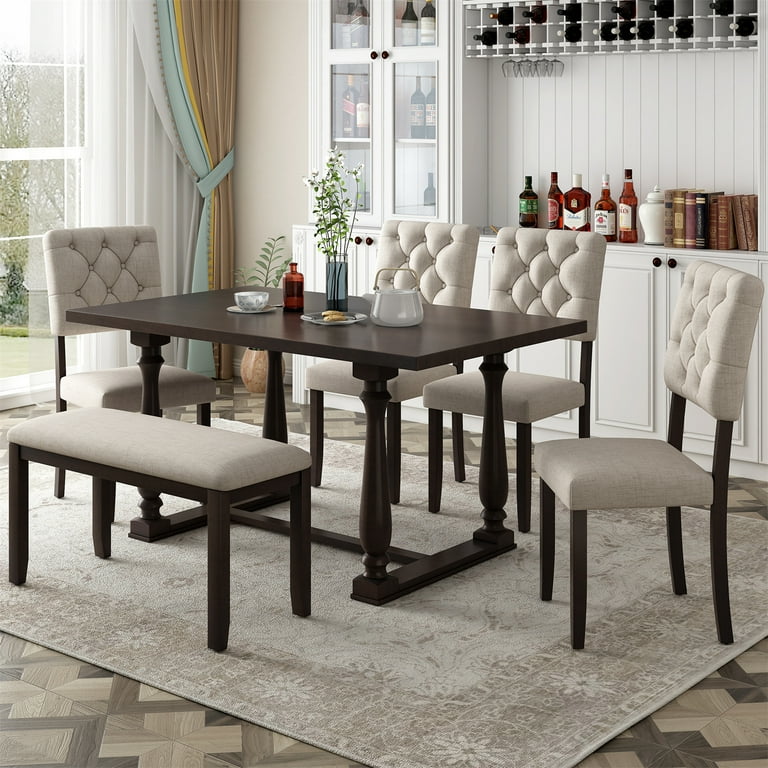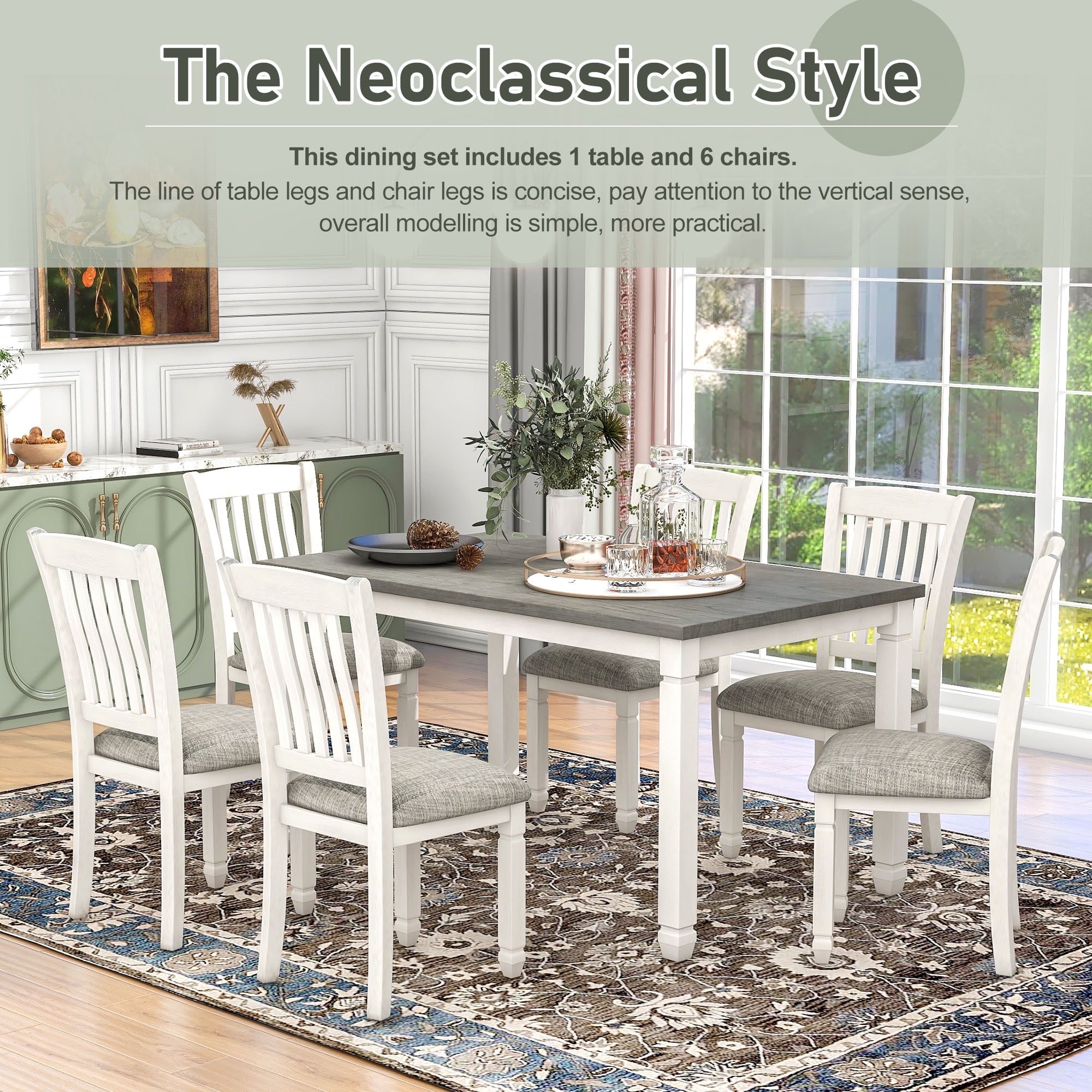Enhance Your Dining Room with Unique and Modern Dining Room Table Legs
Enhance Your Dining Room with Unique and Modern Dining Room Table Legs
Blog Article
From Standard to Modern: Find the Perfect Dining-room Table Legs for Your Design
The choice of eating space table legs plays a pivotal duty in specifying the overall character of your space, linking the space in between standard craftsmanship and modern-day aesthetic appeals. While timeless designs such as cabriole and turned legs stimulate a sense of ageless refinement, contemporary designs like hairpin and geometric options present a chance for striking visual rate of interest. Evaluating the right equilibrium in between these styles calls for a nuanced understanding of your existing décor and personal preference. As you think about these aspects, the concern continues to be: how can you seamlessly integrate these varied leg styles to produce an unified eating experience?
Comprehending Table Leg Styles
The range of dining-room table leg styles can significantly affect both the aesthetics and functionality of the area. Each leg design adds one-of-a-kind visual elements and sensible attributes, accommodating diverse layout choices and use requirements. Comprehending these designs is crucial for choosing the best table that straightens with your total indoor design vision.
As an example, conical legs provide a clean, traditional appearance that can improve an area's beauty, while pedestal bases supply security and make best use of legroom, making them suitable for smaller sized spaces. Hairpin legs, a trademark of mid-century contemporary style, present an industrial panache, enabling an airy, open feel. Trestle legs evoke rustic appeal, giving robust support and a feeling of eternity.
Moreover, the selection of materials plays a considerable role. Wooden legs can bring warmth and structure, whereas metal choices frequently share a streamlined, modern ambiance. Eventually, comprehending table leg designs is essential for creating a cohesive eating area that reflects individual design while guaranteeing usefulness and comfort. By attentively considering these components, you can improve both the visual and useful allure of your dining space.
Traditional Table Leg Options
When choosing dining-room table legs, standard alternatives usually personify classic beauty and workmanship. These layouts mirror a rich heritage and a commitment to quality, making them optimal for those who appreciate traditional aesthetic appeals.
Among the most famous typical leg designs is the cabriole leg, characterized by its graceful bent form. This layout commonly features ornamental makings and is most commonly found in Queen Anne and Chippendale furniture. An additional preferred choice is the transformed leg, which flaunts a series of smooth, rounded forms that supply a classic appearance while keeping security.
In addition, the straight leg, while simple, provides a basic and sturdy structure that can blend perfectly with a selection of tabletop styles. For those attracted to ornate detailing, claw-and-ball feet legs evoke a sense of grandeur and can offer as a stunning centerpiece in any dining area.
Finally, pedestal bases, although not strictly legs, give an alternative traditional choice that permits for adequate legroom and can be perfectly carved. Each of these standard leg designs adds to the total setting of a dining-room, marrying feature with visual allure.

Modern Table Leg Designs
Modern table leg styles supply a diverse array of designs that highlight ingenious products and clean lines. These styles often focus on capability while offering as striking centerpieces within an eating space. Minimalist looks prevail, with legs crafted from products such as steel, glass, and crafted timber, which add to a airy and modern feeling.
One prominent design is the barrette leg, characterized by its slender, tapered structure that gives security without overwhelming the tabletop (dining room table legs). This design is typically discovered in mid-century modern furnishings and can effortlessly complement numerous table forms. An additional fad is making use of geometric shapes, where legs may tackle angular or unbalanced forms, including aesthetic passion and a touch of virtuosity

Blending Styles for Distinct Areas
Often, property owners seek to develop distinct dining rooms view it now that mirror their individual design by mixing various layout components. This technique enables the consolidation of diverse aesthetic appeals, leading to a harmonious yet distinct atmosphere. As an example, pairing a rustic wood table with smooth, contemporary metal legs can create an eye-catching comparison that boosts the room's total allure.
Additionally, integrating vintage table legs with modern table tops can evoke a feeling of history while keeping a modern perceptiveness. Such combinations not just showcase specific taste yet likewise urge imagination, allowing house owners to curate a space that really feels both personal and inviting.
Shade plays a critical role in discover this info here this mixing process; choosing table legs that enhance or contrast with the existing color pattern can improve aesthetic rate of interest. Whitewashed legs can soften the daring of a dark table surface, producing a well balanced aesthetic.
Tips for Selecting the Right Legs
Picking the right table legs is vital for attaining both functionality and aesthetic allure in your eating space. Begin by thinking about the total style of your room. Standard setups benefit from legs that feature complex makings or transformed designs, while contemporary areas might ask for sleek, minimalist styles.
Following, analyze the height and stability of the legs. dining room table legs. Conventional eating tables vary in between 28 to 30 inches in elevation, so ensure the legs match this measurement for convenience. Furthermore, durable materials, such as wood or steel, can improve security and durability
Evaluate the leg shape too-- this choices consist of right, tapered, or pedestal layouts. Straight legs provide a classic appearance, while conical legs can add a touch of beauty. Pedestal bases give enough legroom and are excellent for smaller spaces.
Conclusion
In recap, choosing the ideal dining area table legs calls for mindful factor to consider of both typical and modern styles. By harmonizing leg style, height, and product with the general design, a natural and welcoming ambience can be achieved.
The range of eating room table leg designs can dramatically influence both the visual appeals and performance of the space. Ultimately, understanding table leg designs is crucial for developing a natural eating location that shows individual design while making certain usefulness and convenience.One of the most iconic standard leg designs is the cabriole leg, identified by its elegant curved form. Straight legs offer a traditional look, while tapered legs can include a touch of style.In summary, choosing the ideal dining area table legs requires cautious factor to consider of both conventional and contemporary designs.
Report this page